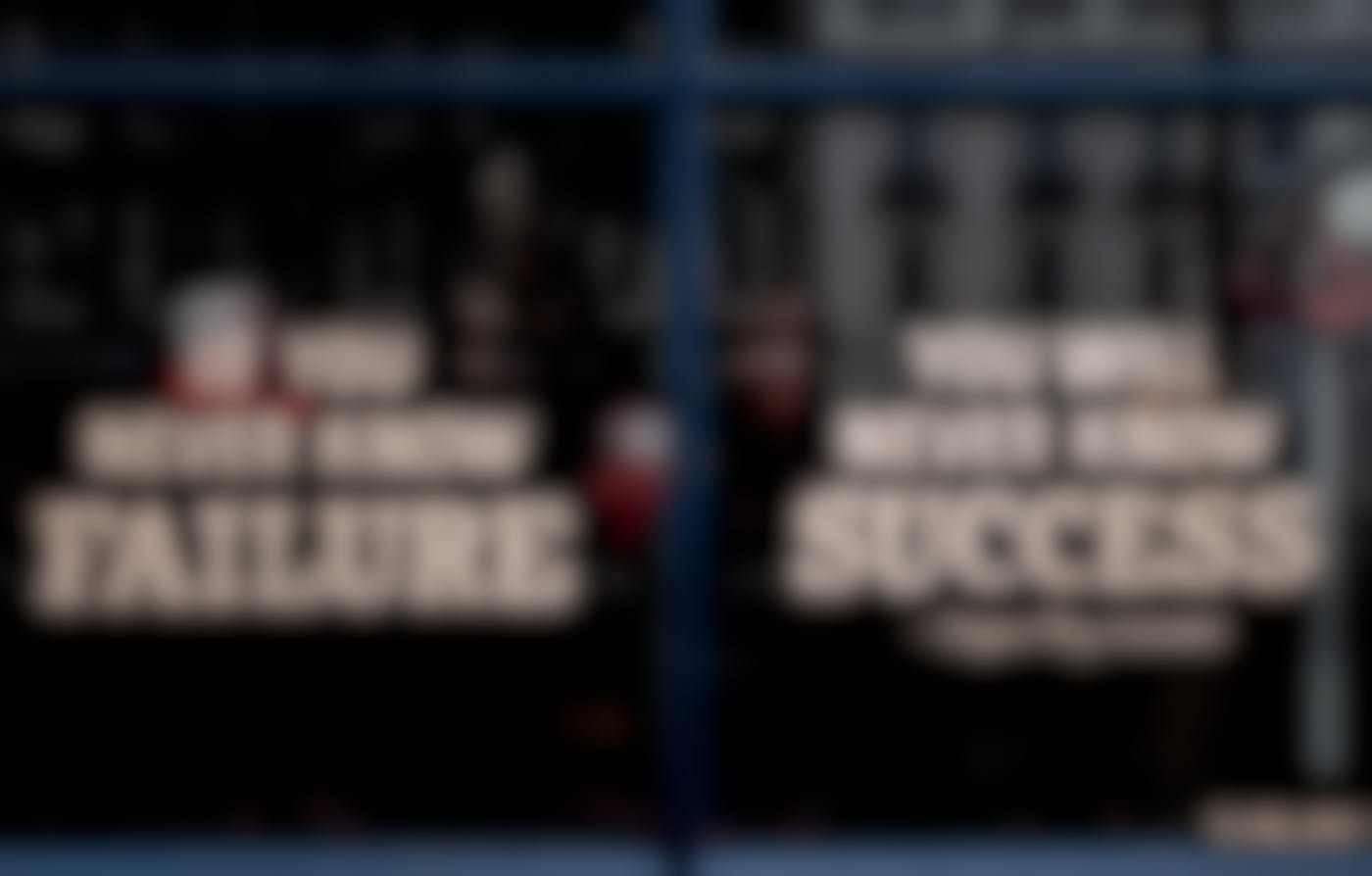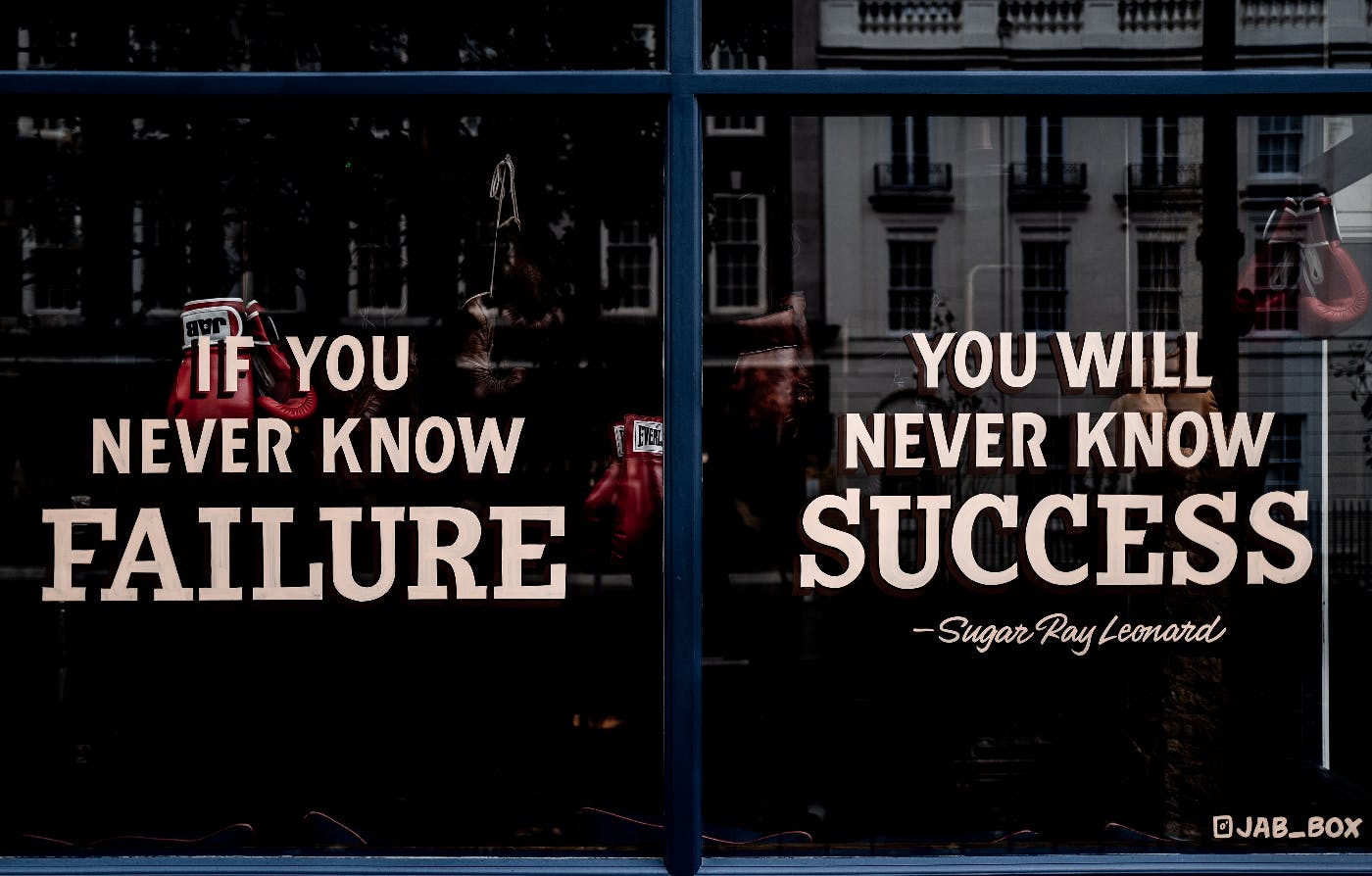
For some, failure is a way of life, part of the process; without failure, success could never be achieved. So when is failure a welcomed part of the process, and when is failure not an option?
In Ron Howard’s masterfully directed movie Apollo 13, Ed Harris, in his Oscar-nominated role as Gene Kranz, then NASA’s Director of Flight Operations, utters this heavy sentence: “failure is not an option.” The moment is dripping with foreshadowing and doom, and Harris delivers it perfectly.
In reality, Kranz, the NASA flight director whom Harris was portraying, never said that; he never said failure is not an option. However, he chose the sentence as the title of his autobiography, saying it expressed how NASA saw its projects and how he lived his life while working for NASA.
It’s a pretty dramatic moment, and the line fits perfectly. But is it true? Not meaning did he say it, but is failure not an option? Ever?
For some, failure is a way of life, part of the process; without failure, success could never be achieved.
So when is failure a welcomed part of the process, and when is failure not an option?
For the Creatives
For those who live a creative life and have jobs in the creative field, you know failure and its worth. If you’re just starting out or thinking of a creative occupation, here is how you should think of failure.
Failure should not be shied away from, never treat failure like a delicate, hothouse flower that you look at from a distance but avoid touching. Instead, failure should be grabbed and roughly embraced like a respected foe, an admired champion, one you must move through to reach your next goal: success.
First, you have to define success for yourself. Is it riches and houses and servants at your beck and call? Is it peace and harmony with nature and inner tranquility? Is it a house in the suburbs with family and friends? Is it all of these?
The trouble comes when you try to live someone else’s success. First, define your success and then begin to fail.
Understand that you’re creating a path to success when you fail. Failure is not an ending; it is removing paths that will not lead you to your ultimate goal: success. The truth is, there is no success, no matter how great, how small, how public, or how private, without failure.
Never fear failure, if you do, no matter what situation you walk into, all you will see is failure, and it will overwhelm you and leave you motionless forever.
Embrace failure; it opens your eyes to things you never thought of before. Failure is the possibility of trying again.
The great writer Samuel Beckett said: “Ever tried. Ever Failed. No Matter. Try again. Fail again. Fail better.” The better your failure, the bigger the leap, the harder the fall; Now, rise again, try again; only then will your success outmatch your failure. In this way, you have built a ladder with your failures to reach your success.
All that sounds great, doesn’t it? It makes you want to jump up and fight. See your path and become the success you have always known you could be—Yay and rah-rah for this failure pep talk.
Fail big, and then you will succeed big; that’s what every pull yourself up by your bootstraps article about failure will tell you. And, a lot of that is true.
But sometimes, it’s not the big failures that leave us devastated and laying in the darkness, unable to move; it’s the quiet, desperate failures that no one sees that haunt us and make us ask, why go on?
The little failures crack the walls, eat away at our souls, and leave us desperately grasping the fleeting tendrils of hope. Those are the most brutal failures to face. How you face this failure will define how you receive success.
Big or small, there is a certain beauty in failure. In the long shadows of the day’s end, the beaten body, the bent back, broken spirit moving slowly in the dust of defeat, rising and shrugging off the day. The back straightens, the limbs tighten, the head raises, and the eyes, resounding with the experience of failure, search for the next opportunity. At that moment, we don’t know failure; we know the strength and hope it gives the ones who dare to try again. We see the inner light of the human spirit, an indomitable force that comes to those who have failed and not backed down.
We see the brutal beauty of a sigh, a nod, an acknowledgment of the failure, the familiar foe, and the resolve to come back again. Try again. Fail again. Rise again.
Fail again.
The beauty of failure is that in the midst of its destruction, we realize it is also creating. It creates possibility, strength, purpose, resolve, and hope. These are elements that artists have been replicating for centuries in paint, marble, dance, and words.
The outcome of failure is the Sistine Chapel, the Emancipation Proclamation, the Theory of Relativity, Starry Night, Harry Potter, The David, and so much more.
So today and every day, don’t hesitate, leap before you look, risk everything and wrap yourself in the bright possibility of failure.
Wear it well; it’s beautiful.
For the Rest

If there are lives on the line, billions of dollars to be lost, and the eyes of the world are on you, then yes, failure is not an option. That idea, that drive is what is needed in situations such as the astronauts on Apollo 13 faced. There was no room for failure because that meant death.
But, if you’re a CEO of a company, and even though failure doesn’t mean death, there comes the point when failure is no longer an option.
If we remove death from the equation, then where is the line? When does failure get a pass, when is it encouraged, and when can it no longer be tolerated?
This is not a cut-and-dried question. A good boss understands the freedom they have to give their creative teams. They know that failure is a vital part of the creative process and allow for that.
However, at some point, this good boss also knows other employees, stakeholders, customers, and bills all need his attention. Knowing how to manage your creative people is vital when dealing with time pressure and failure.
Responsible Creatives
We’ve discussed this in other articles dealing with creatives and creativity. Sometimes the title “creative” is seen as a free pass. Bad behavior, negative attitudes, and the like are all given an averted gaze because the person exhibiting the questionable behavior is a creative.
It is the responsibility of the creative to understand the rules of the business, play by them and produce work in a timely manner. That is, after all, the job description.
It is great when your boss understands writer's block or those times when there is nothing in the engine, and your productivity is a struggle. A good boss knows you cannot expect creatives to produce like pulling salt cod from a barrel. However, along with the boss’s understanding, the creative must understand as well.
There is a difference between studying a creative art and working as a creative artist. In the studying process, there is time, debates, and the freedom to experiment, fail, try again, and on and on. That’s great and vital to the process. And that process doesn’t end when you become a professional. However, if you want to be a working professional, you need to understand that you will be called upon to produce in the working world.
If you’re a solo creative with a lovely studio and you are your own boss, that’s different than working for a company. The idea that you will make the company change to fit your creative process is a little egotistical and unreasonable. You will need to adjust and make every effort to fulfill the demands of your contract.
Communication

The best way to resolve this issue is to have transparent and honest communication right from the start.
If you’re a manager and hiring your creative teams, do not lie to them. Do not paint a rosy picture of coffee breaks, foosball games, and all the creative freedom you need when interviewing. Make it clear that you understand the needs of a creative person, and you’ll take every step to create an environment conducive to creativity, but don’t forget the reality of production. Make sure you stress that there are deadlines and client demands. Make sure you represent an honest picture of the job.
If you’re a creative applying for work, be realistic. Understand that, despite your talent, there are a hundred people behind you who can also do the job. And maybe someone in that 100 likes deadlines and has no trouble with the corporate world. This doesn’t mean you have to compromise your life; it means you must be realistic. You have to have plans in place for your blocks and dry times. You must learn coping skills when a client doesn't understand, accept or appreciate your work. You have to know to work within the new guidelines of the job and not expect the boss to let bad behavior slide.
With a clear understanding of what both sides need, open and honest communication can happen, and both sides can find common ground and make the situation work.
Creatives need to keep in mind that their skills and talent do not place them above the company's rules and needs.
CEOs need to remember that creatives operate differently than accountants, shipping and receiving, and even sales. They need to understand and do what they can to make the environment safe to create and safe to fail.
A Double-Edged Sword
We talked about failure being a double-edged sword, and that term usually conjures up a negative picture. But think about the reality of this weapon. In the hands of a skilled warrior, the double-edged sword kills, damages, and generally puts the enemy out of commission from either side. There is no blunt edge, so both sides of the blade are the “business end” of the deal.
With communication and clear understanding, slight compromises from both sides, and respect for the work that everyone in the company does, the double edge sword of failure becomes a mighty weapon.
Understanding how to communicate with your creative teams and embracing the need for failure will give your creatives a better chance of succeeding and being happy in their positions. Once they know they are trusted, respected, and understood, you can have a creative team that grows, strengthens, and develops over time and stays with you.
Understanding and accepting the realities that come with being a creative in the working world, knowing what’s expected of you, and being transparent with what you need to do your best work for the company, allows you, as a creative, to have a steady job and a place to do the work you love. Be open and understanding, and do not take yourself too seriously, and you can have a long career.
ThoughtLab Champions Creatives
We love our creative teams and creative individuals here at ThoughtLab, and we do all we can to give them the best environment to grow and succeed. We also know about deadlines, grumpy clients, demanding clients, and long days.
It’s hard for us to counsel putting demands on your creative teams, but we know that is necessary. We also know that allowing failure is vital to the process, but creatives actually do better with deadlines and demands.
The bottom line is communication. Being honest on both sides of the table, being clear, and understanding what is needed from both sides.
Failure is good and should be embraced, but allowing failure to take the lead is not productive for anyone. If the creative sees only failure, they will only fail. If the boss ignores the value of failure, no good work will ever be produced. Both sides know that there needs to be a limit; there needs to be a point where failure is no longer an option.
Talk and listen. We’ll repeat that because it is essential: talk and LISTEN. See how the word listen is huge because it’s often ignored. Listening by both parties will solve problems and create paths for better communication. The best work is always done when communication is at a high level.
Don’t fear failure, but don’t let it steer the ship.

